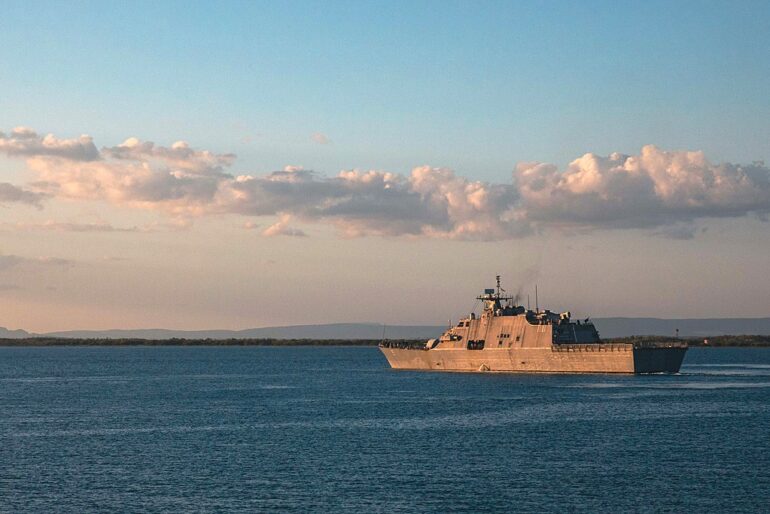Three U.S. Aegis guided-missile destroyers are now reportedly expected to arrive off the coast of Venezuela within the next 36 hours, according to two sources briefed on the matter, marking the Trump administration’s most significant escalation yet in its fight against Latin American drug cartels.
The ships — the USS Gravely, USS Jason Dunham, and USS Sampson — are part of a broader deployment aimed at countering narcotics networks that the administration has designated as global terrorist organizations.
President Donald Trump has made clear that he wants the U.S. military to play a more direct role in dismantling the cartels, which he has tied not only to the drug trade but also to migration and instability along the U.S. southern border.
A U.S. official said that approximately 4,000 sailors and Marines will be committed to the operation across the southern Caribbean.
The buildup will include P-8 spy planes, warships, and at least one attack submarine. The deployment, the official added, will last several months, with the assets operating in international waters and airspace.
According to the official, the naval force is capable of a wide range of missions — from intelligence gathering and surveillance to serving as “a launching pad for targeted strikes if a decision is made.”
The administration has previously made clear that it views the drug cartels not only as criminal organizations but as national security threats.
Venezuelan President Nicolás Maduro, whose government has long clashed with Washington, responded defiantly in a national address on Monday.
Without directly mentioning the U.S. warships, he vowed that Venezuela would “defend our seas, our skies and our lands,” denouncing what he described as “the outlandish, bizarre threat of a declining empire.” Venezuela’s communications ministry did not immediately respond to requests for further comment.
For Mr. Trump, the show of force represents the continuation of a broader strategy.
He has consistently tied the presence of drug cartels to illegal immigration, arguing that confronting these organizations is vital to national security.
The administration has already deployed warships to assist with border security and drug interdiction.
In February, the Trump administration formally designated Mexico’s Sinaloa Cartel, other Mexican gangs, and Venezuela’s Tren de Aragua criminal group as global terrorist organizations — a move intended to unlock greater legal and military tools for combating them.
Military officials have also expanded airborne surveillance of cartel operations in Mexico, with the goal of gathering intelligence to disrupt supply chains and apprehend cartel operatives.
The deployment of destroyers to waters off Venezuela underscores Mr. Trump’s willingness to use military power as a central instrument of policy, particularly in the Western Hemisphere.
While critics have questioned whether such measures risk escalating tensions, supporters argue that the administration is addressing threats that previous governments ignored.
As the operation unfolds over the coming months, U.S. officials say it will test not only the Navy’s capacity for long-term regional operations but also the administration’s resolve in treating cartel violence as a global security challenge, rather than simply a law enforcement issue.
[READ MORE: Jeanine Pirro Declined Trump’s FBI Role but Has Emerged as a Force in Washington]



